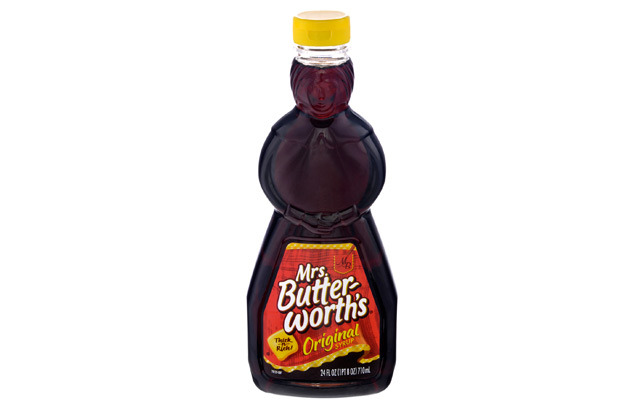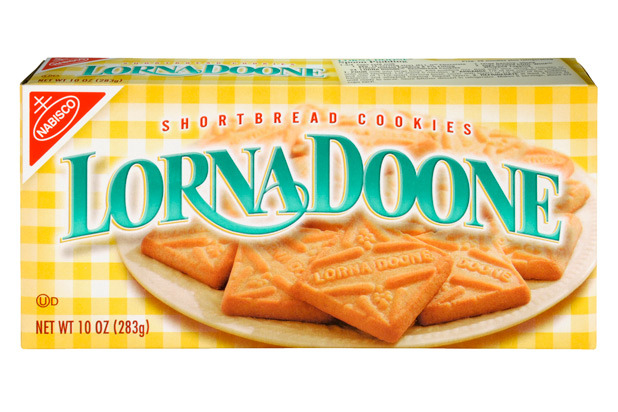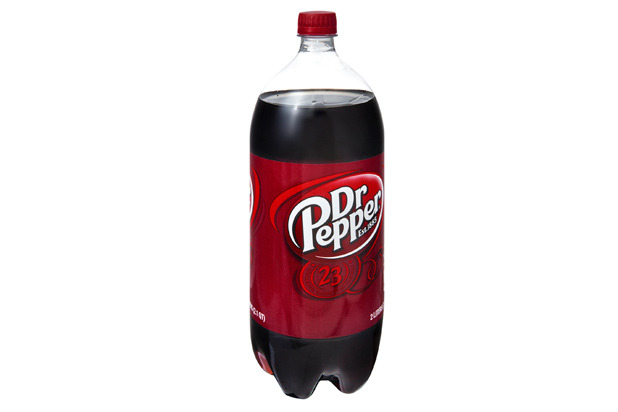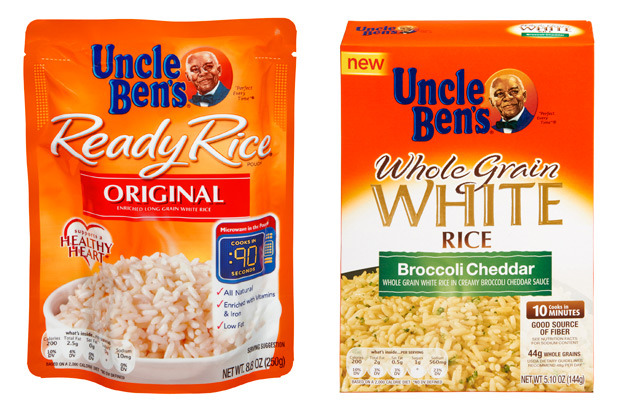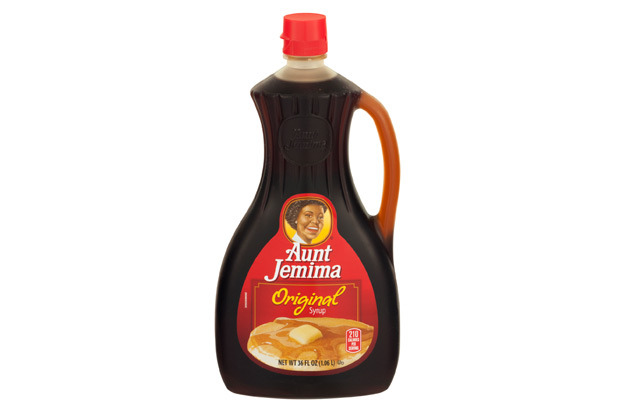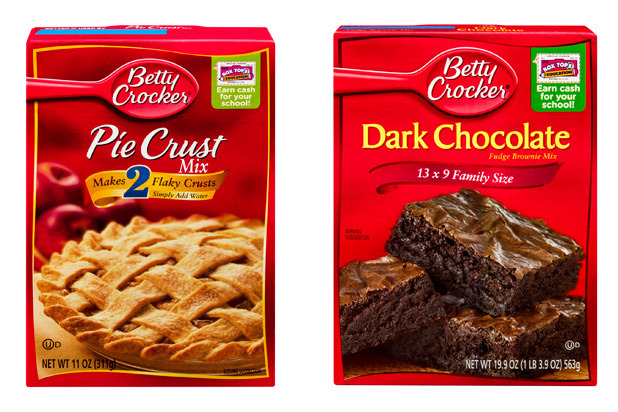Famous Fake Food Figureheads (Slideshow)
While Francesco Rinaldi might sound like the name of a great Italian chef, his name is no more real than Mickey Mouse's. The Francesco Rinaldi brand, best known for jarred pasta sauces, was handed down from original owner Edward P. Salzano to Cantisano Foods when they joined forces in 1982, and then to current parent company LiDiestri Foods in 2002. Its website is very coy about who this Francesco Rinaldi was, or if he ever existed to begin with, so to put our suspicions to rest, we gave LiDiestri a call. A rep gave us an answer that demonstrated a near-encyclopedic knowledge of the brand and its history: "He never existed. It's a brand that was created by... somebody," she said.
And there you have it.
7) Mrs. Butterworth's
If Mrs. Butterworth ever existed, it was in the form of a talking syrup bottle, because that's all she is. Owned by Pinnacle Foods, the animated syrup bottle, which is decked out in a full maid's outfit (idealized domesticity!), first made her appearance in television commercials in 1961, and for a time was voiced by Mary Kay Bergman, who also voiced many of the female characters on South Park. Mrs. Butterworth still appears in commercials for the product today, and it was recently revealed that her first name was Joy.
6) Juan Valdez
Juan Valdez, that famed Colombian coffee grower, is also a complete fabrication. He was invented by the Doyle Dane Bernbach ad agency in 1959, to appear in advertisements for the National Federation of the Coffee Growers of Colombia. Their goal was to help distinguish Colombian coffee from coffee grown in other countries, and Valdez frequently appears on-screen alongside his trusty mule, Conchita, carrying sacks of coffee beans. While Juan is a common name across Latin America, the name Valdez is actually nearly unheard of in the Colombian coffee-growing region. Over the years, Valdez has been portrayed by actors José F. Duval, Carlos Sánchez, and, currently, a real coffee grower by the name of Carlos Castañeda.
5) Lorna Doone
This Nabisco-produced shortbread cookie first rolled off the production line in 1912, and was most likely named after the main character in R.D. Blackmore's 1869 novel Lorna Doone: A Romance of Exmoor, about rival clans in 17th-century Scotland. While it's loosely based on actual historical events, Blackmore apparently invented the name Lorna. No word as to why this particular name was chosen by Nabisco brass, but seeing as we haven't read the book, we're not sure if she has any particular fondness for shortbread cookies.
4) Dr Pepper
While there might have been several Dr. Peppers throughout history, none of them invented any popular sodas, including the one that was devised by pharmacist Charles Alderton in Waco, Texas, in the early 1880s and soon took the name Dr. Pepper. No one can say for sure how the name came about, but there are a few theories: Some contend that it got its name because it contained pepsin (similar to how Pepsi got its name); others argue that its initial use as a tonic was intended to "pep" you up. There's a popular myth that the drink was named after one Dr. Charles T. Pepper, who supposedly granted Wade Morrison, the owner of the drug store where Alderton worked, permission to marry his daughter or offered him his first job. They lived nowhere near each other, though, and Pepper's daughter would have been only 8 years old at the time. So while Morrison very well might have been acquainted with a doctor by the last name of Pepper (he apparently also lived near one for a time, according to census records, and may have even had a thing for his daughter), the good doctor most likely had nothing to do with the naming of his soda.
3) Uncle Ben
Uncle Ben's is one of the top-selling rice brands in the United States, and Uncle Ben's smiling visage adorns every package of his famous rice. But is it really his? Introduced by Converted Rice Inc. in 1946 and later bought by Mars, the rice is par-boiled and treated to avoid weevil infestation and contains more nutrients than regular rice. The elderly, bow tie-clad African-American man whose face appears on every package might have been influenced by a Chicago maître d' named Frank Brown, and the company maintains on its website that "a black Texan farmer — known as Uncle Ben — who grew rice so well [that] people compared CONVERTED® Brand Rice to his standard of excellence" inspired the brand name. This could all be marketing ploy, as it sounds a little too good to be true, and the company did not respond to our inquiries, so we're going to go ahead and say that the jury is still out on this one.
2) Aunt Jemima
The jury most certainly isn't out on Aunt Jemima, who originally was a character in a popular minstrel song. When Chris L. Rutt and Charles G. Underwood invented an instant pancake flour in the late 1800s, they decided to use the song's character of "Old Aunt Jemima" for the company logo, symbolizing the traditional "mammy" who lived to serve. By the time the duo's company was acquired by Quaker Oats in 1926, Aunt Jemima was firmly engrained in American culture, having been portrayed at expositions and state fairs by Nancy Green, a former slave who played the role from 1893 until her death in 1923. The legend at the time was that this lady, and the seven others who played the role, was a real cook who made the finest pancakes around. Her smiling visage still adorns Aunt Jemima pancake mix today, but there's obviously been an effort to tone it down; instead of a head-rag and maid's outfit all we see if a close-up of her face.
1) Betty Crocker
No, Virginia, there's no such thing as Betty Crocker, and she never existed. Betty Crocker was invented in 1921 by the Washburn Crosby Company (several years before it was renamed General Mills), in order to provide a personalized response to inquiries about their consumer products. Marjorie Husted, an economist employed by the company, devised the name, and in 1924 she launched, wrote, and provided the voice for radio show Betty Crocker Cooking School of the Air, which ran through 1953 and helped give Betty a level of fame matched by few (in 1945 Crocker was named by Fortune magazine as the second most popular American woman, behind Eleanor Roosevelt). Her name has adorned cookbooks, catalogues, and more recently cake mix, and while her face and voice might be familiar to millions of Americans, she's completely fictitious.

